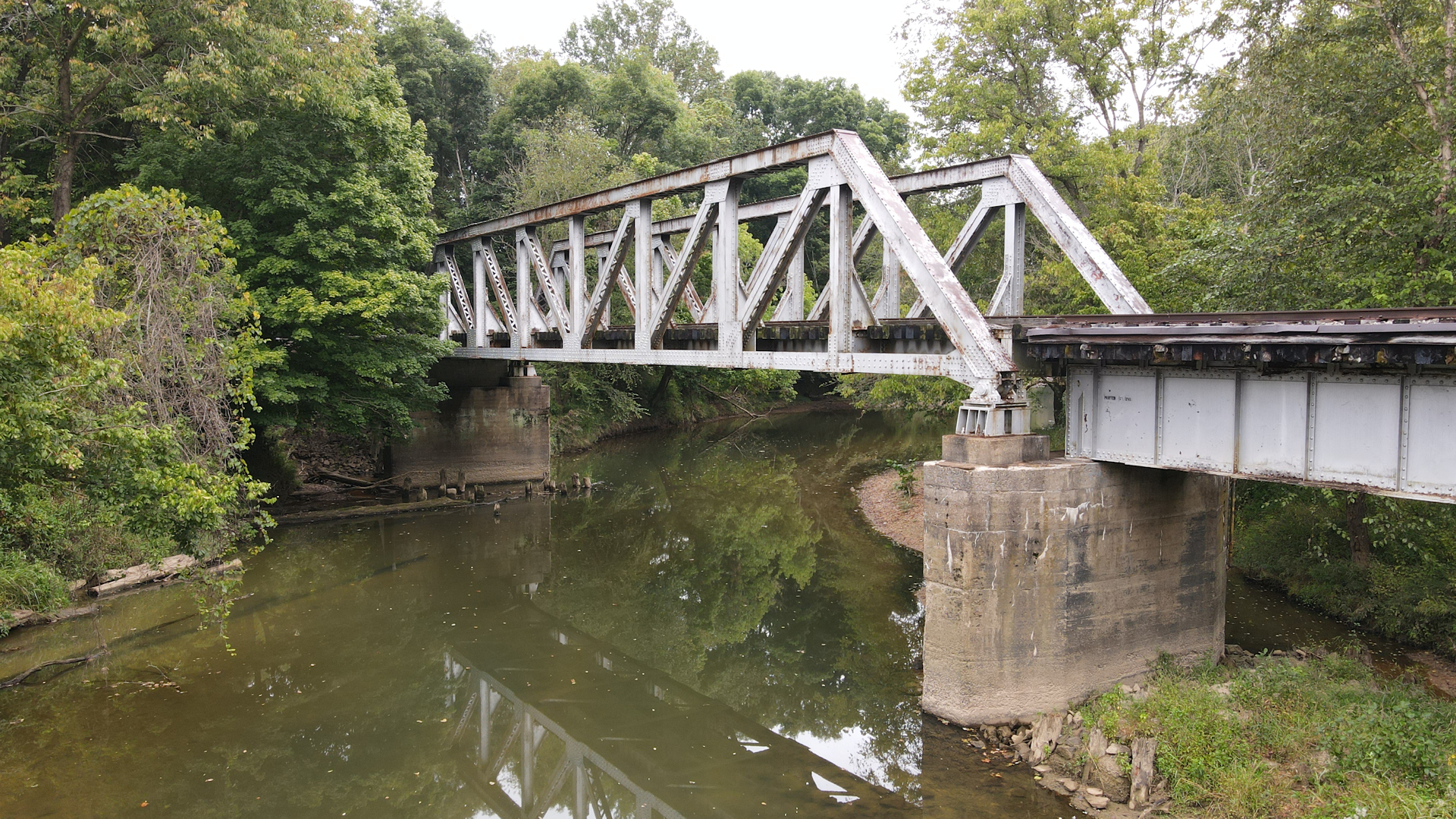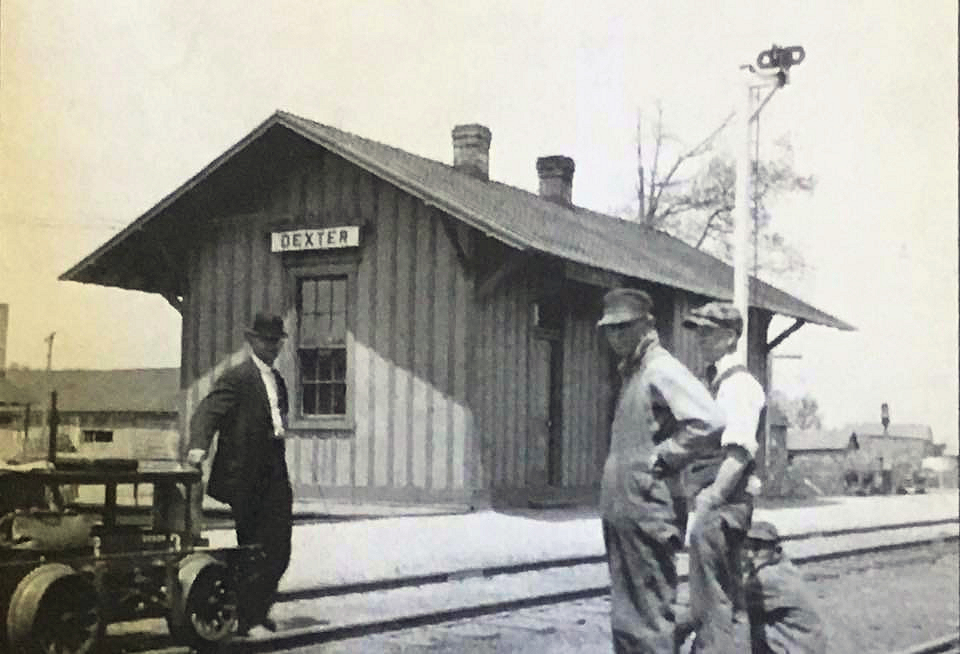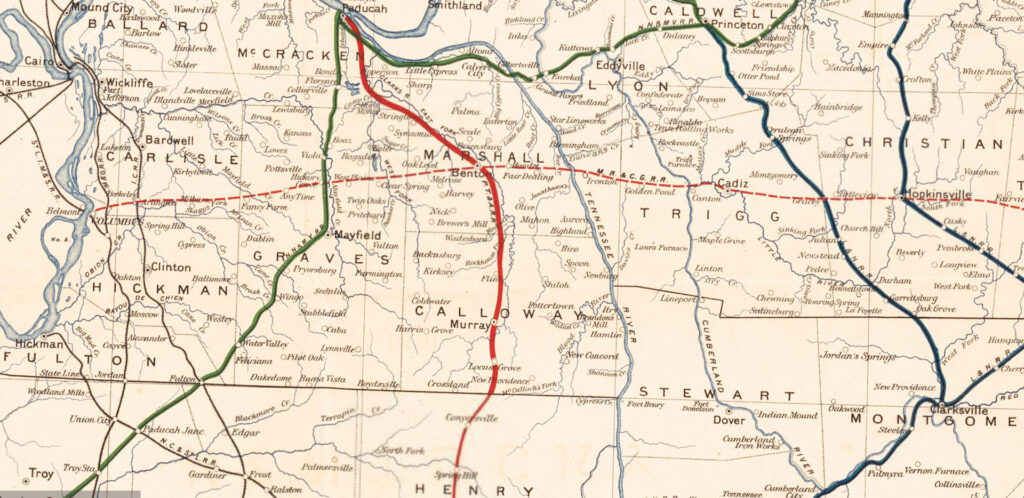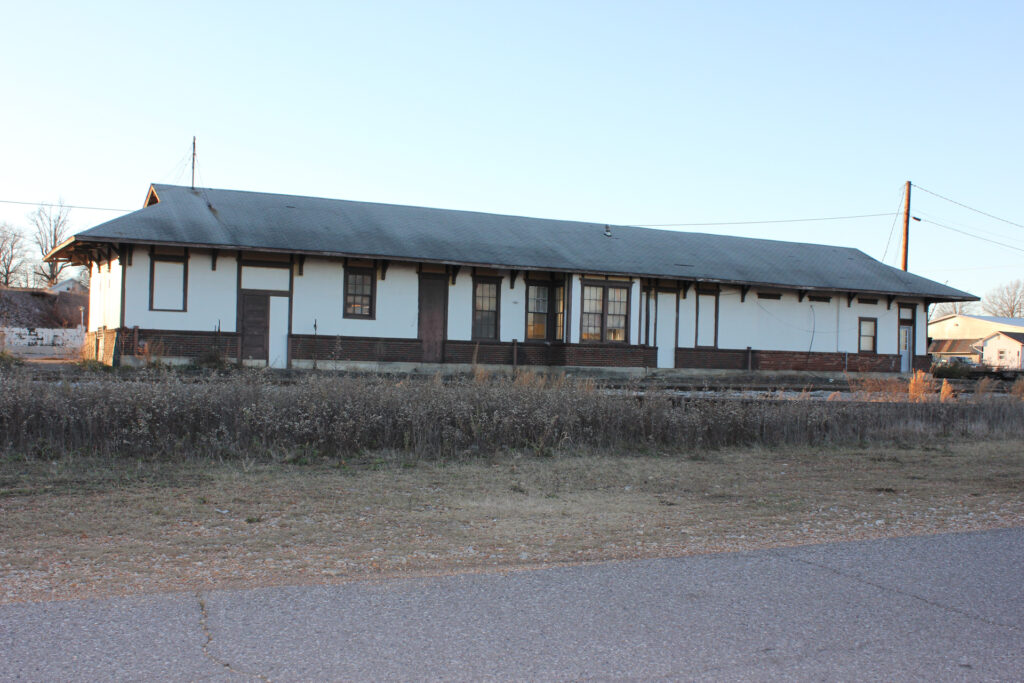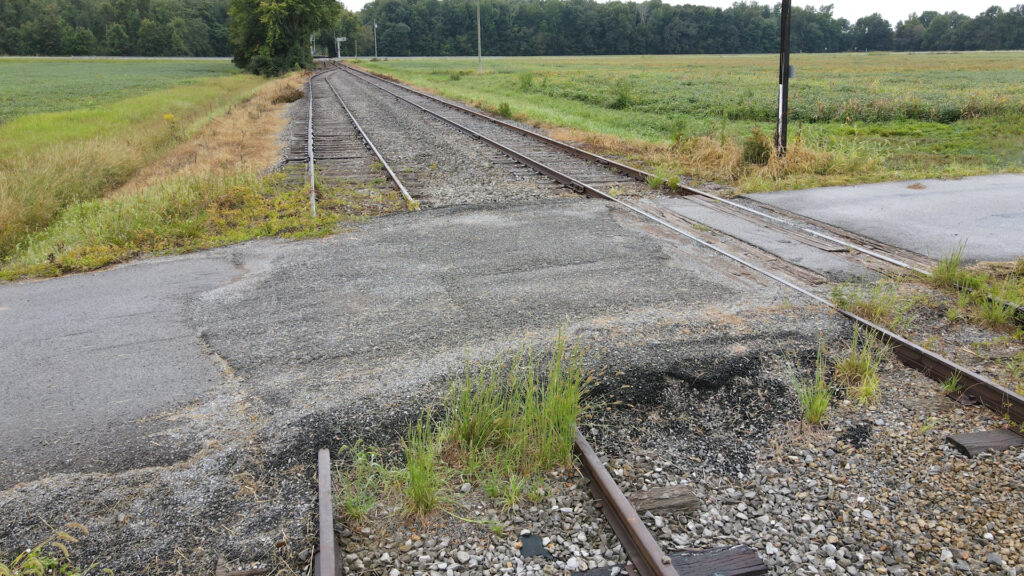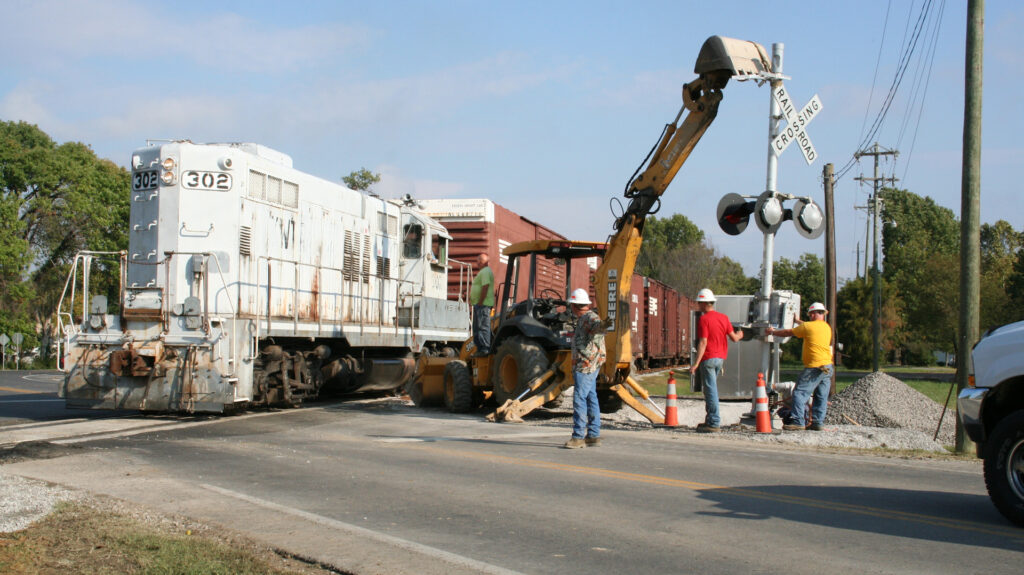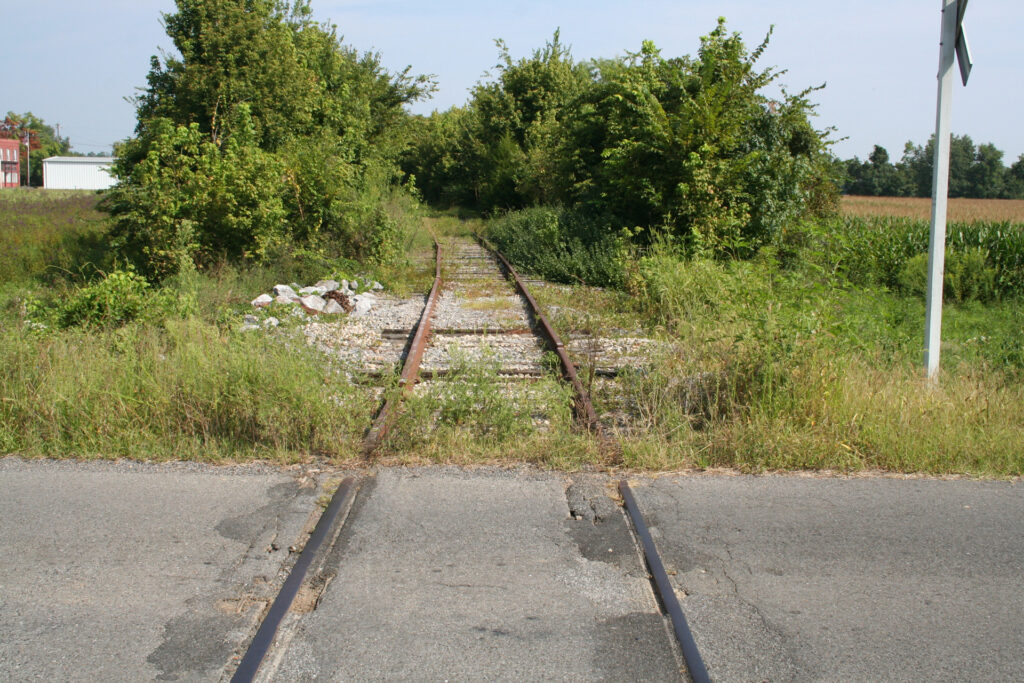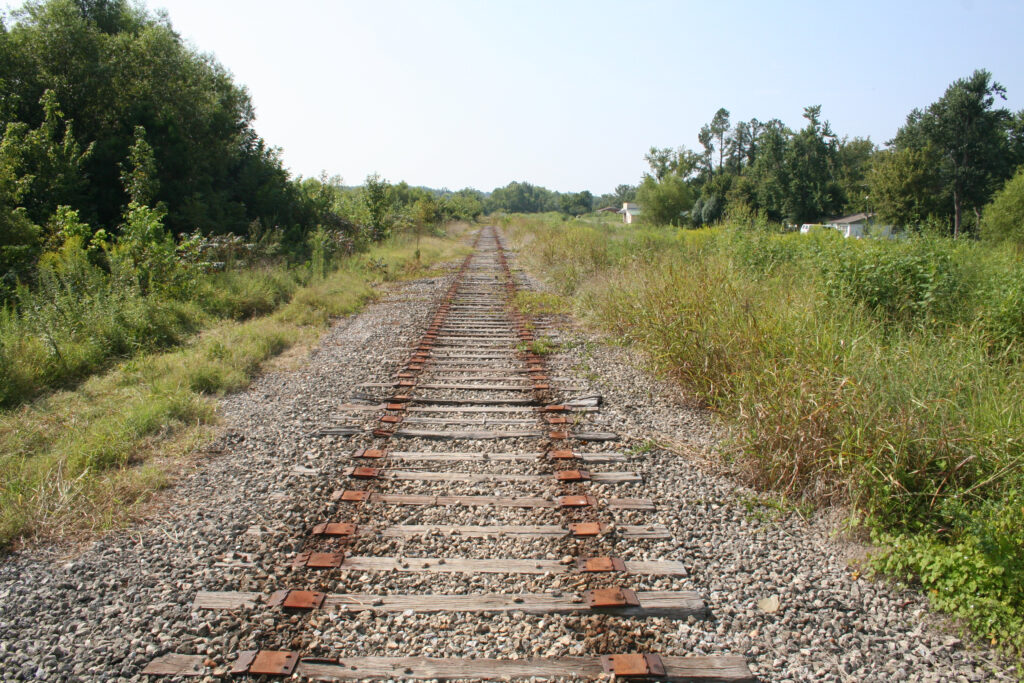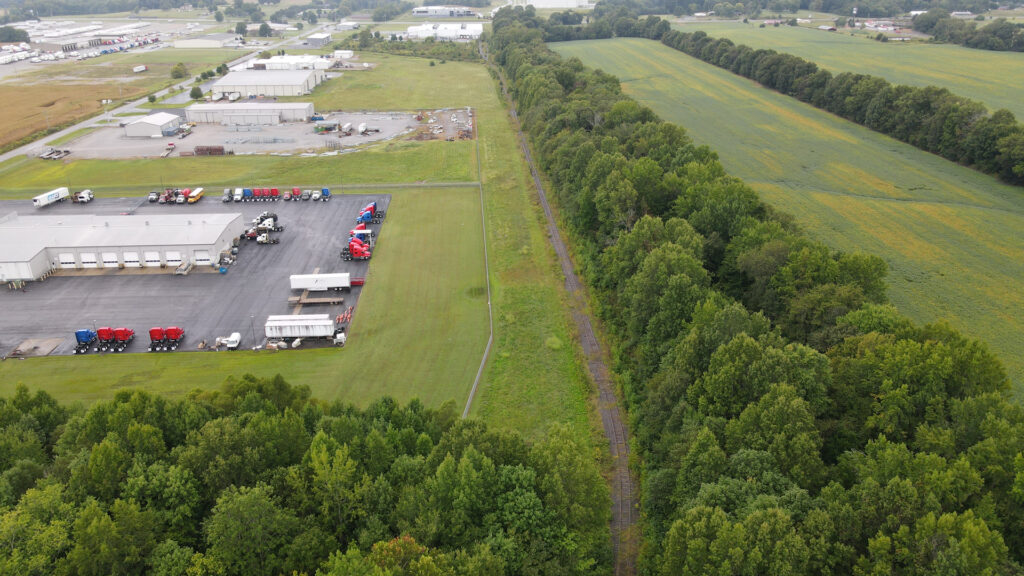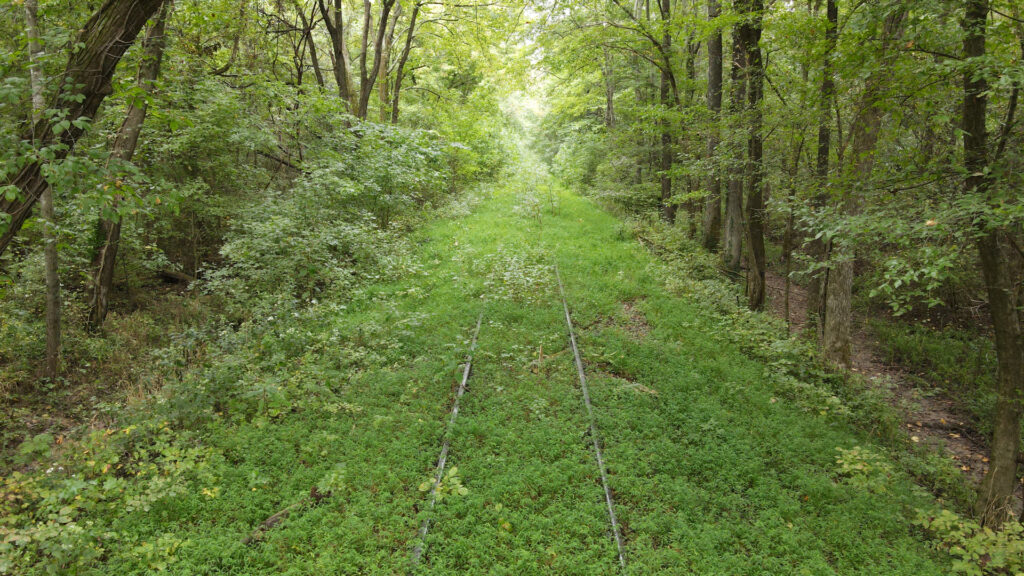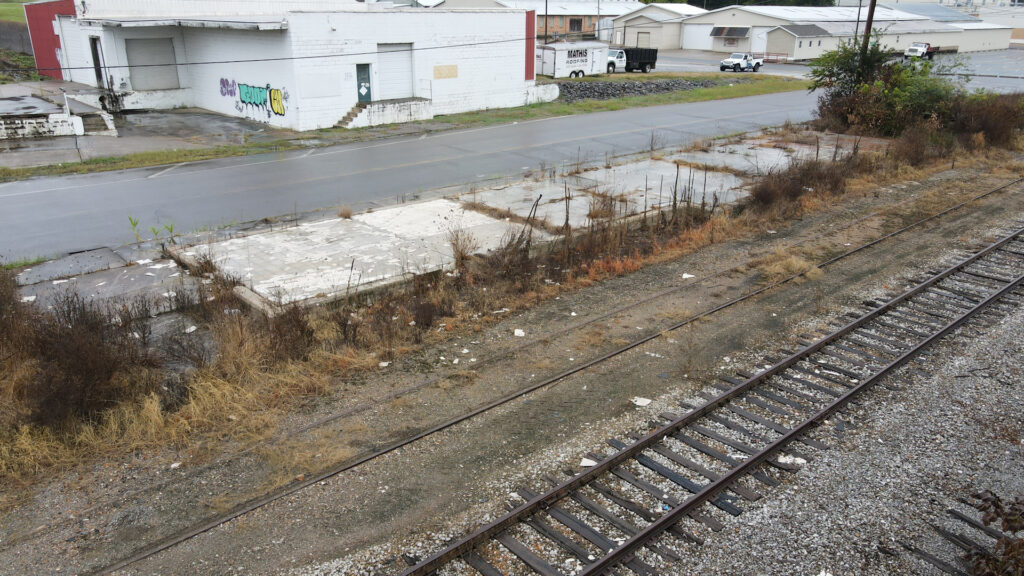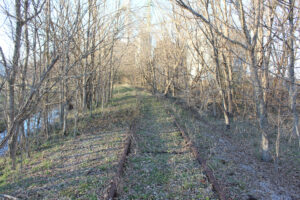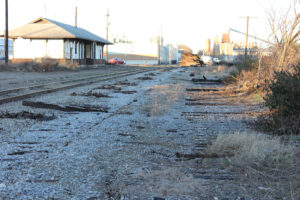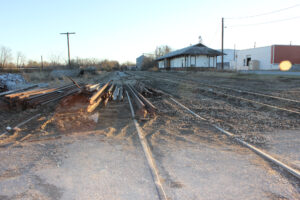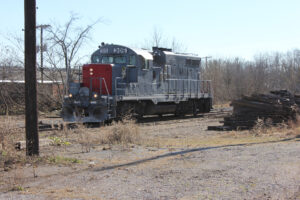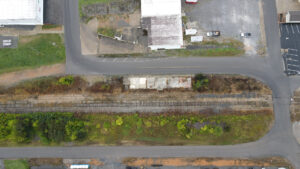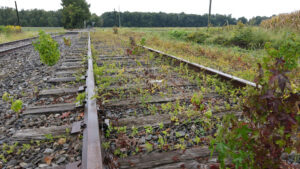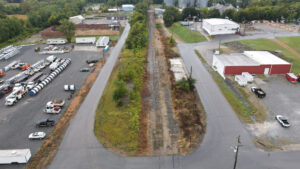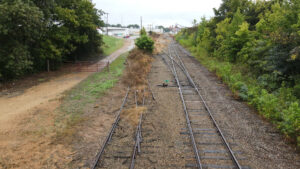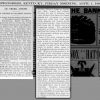While writing this feature I channeled my inner Sheldon Cooper (The Big Bang Theory), who had a love for trains on the popular CBS sitcom. While not an avid railroader, I do appreciate the concept of railroads and how they were a cornerstone is shaping our nation’s history. And that includes the history of our community.
Murray and Calloway County is no stranger to railroads with the first line coming through the county in 1890. But Calloway County’s railroad history goes back a bit farther than that.
Back in the day, railroad companies were chartered, incorporated, and dissolved faster than Howard Wolowitz could hit on a girl (another reference to TBBT). One of those examples came about around 1870 when the Louisville, Memphis and New Orleans Railroad came into existence. Their grand vision included a railroad from those towns, with it passing through Hopkinsville, Cadiz, Murray and Union City, Tenn. The company didn’t get very far; they were purchased by another company a couple of years later.
Another shot at Calloway County getting its first railroad happened in 1886. The Ohio Valley Railroad proposed building a route from Morganfield, Eddyville, Murray, and on to Jackson, Tenn. Calloway Countians were asked to put up a $75,000 bond (or over $2 million today) to help cover the costs of the railroad.
Visionary progressives knew the railroad would open more opportunities for trade and commerce. On the other side, some viewed the coming of the railroad would bring unwanted newcomers or would disrupt their traditions. A few were known to call railroads “evil” and “agents and instruments of hell itself” which stirred others’ religious convictions.
A special election was held in Calloway County on January 22, 1887, for citizens to effectively vote for or against the railroad. The ballot measure failed by just 25 votes. The Ohio Valley Railroad began to look elsewhere for their plans. Murray missed out on that one.
Not long afterwards, the Paducah, Tennessee and Alabama Railroad presented a north-south route from Paducah, Murray and on down to Paris, Tenn. More debate occurred and more votes were held , but finally the $75,000 bond measure passed.
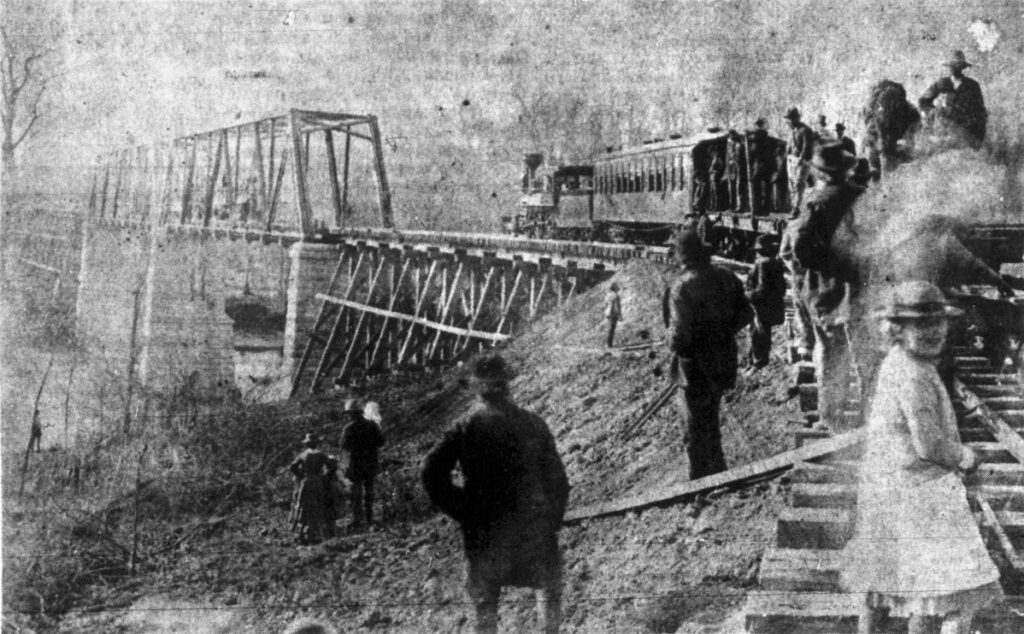
The first train on the Paducah, Tennessee and Alabama Railroad entered Murray during the winter of 1890, with a line now connecting the east-west railroads at Paducah and Paris. Murray would never be the same.
Appearing in the Murray Ledger & Times in September 1969 is a photo brought to the paper by Mrs. Wendall Patterson. It’s one of the older photos of Murray, showing the first train crossing the bridge at Clark’s River in 1890. The locomotive is pulling a passenger car and a flat car with a band playing and a cannon shooting. This bridge in the photo doesn’t appear to be the one in use today, however, which is located just north of Kentucky 121.
The fortunes of Murray’s first railroad were lauded, and most folks eventually accepted the positives that came from it. Even entire towns were created along the new railroad in Calloway County. Dexter and Hazel incorporated shortly after the railroad’s arrival with Almo springing up from virtually nothing. Murray’s population went from 518 people in 1890 to 1,822 just ten years later. The railroad was so successful, leaders in Murray began to wonder if they could snag another line – perhaps an east-west route.
Now full warning… this is where it gets confusing. And likely only Sheldon Cooper-types would appreciate it.
Around this time, different railroad companies were jockeying for another east-west route through western Kentucky. Several different railroad companies desires to build through Calloway County are documented.
The Cairo & Cumberland Gap Railroad wanted an east-west line that would run through the northern part of Calloway County as early as 1888. The promise of that railroad progressed to a point where surveys were being made between Eggners Ferry and Calloway Ferry on the Tennessee River in September 1896. This would be in northeast Calloway County.
Other similarly named ventures known as the Mississippi River & Cumberland Gap Railroad (which appears on the 1891 map below) and the Cumberland Gap & Mississippi River Railroad are also in historical accounts. All three of these generally followed the same route through or near Calloway County, give or take 10 miles.
In 1906, the Cairo, Mayfield and Nashville Railroad incorporated and had plans to build a line southeast from somewhere close to the Ballard-Carlisle County line on the river, to Mayfield, to about four miles south of Murray. The road was to be about sixty miles in length but was never built. Not much is known about this one.
At the same time CM&N Railroad incorporated, another line was looking at Murray, and this one was quite promising. Rainey T. Wells, (who founded Murray State later in 1922) traveled with a small delegation of Murrayans to Mayfield to discuss the Cairo & Tennessee River Railroad passing through town.
Surveyors were sent to map out the line from Murray to the Tennessee River. According to the Cadiz Record on April 19, 1906, crews wrapped up their surveying during that spring. The new railroad would enter Calloway County at Calloway Ferry in the northeast and travel to the existing Cadiz Railroad, connecting the Mississippi River, Tennessee River, Cumberland River and a main railroad line in Hopkinsville.
It even went as far as receiving approval from the Kentucky General Assembly and the US Congress around 1907 and 1909 to build railroad bridges across the Tennessee and Cumberland Rivers, which would have cost a fortune. However, voters in some jurisdictions the railroad would pass through rejected bond efforts and plans for that railroad died. The Cairo and Tennessee River Railroad was the most promising and progressed the furthest of the all the wannabes.
No doubt, reading about all those railroad companies who jockeyed for an east-west route is pretty confusing. However, it paints a picture of entrepreneurs who scrambled around the turn of the 20th century to build east-west roads through the area.
Murray Almost Saw an Interurban Railroad
And now for something a little more shocking, pun completely intended: an electric railroad almost came to Murray.
Also known as interurban railroads, electric railroads became all the rage in western Kentucky around 1910. These lines would be powered by overhead electrical lines and efficiently move passengers from one town to the next. Automobiles were a novelty and roads were dreadful back then, so these new electrified railways were popular among residents of western Kentucky.
Murray was in the running for one of these interurban railroads. The Kentucky Southwestern Electric Railway & Light Company (that’s a mouthful!) wanted to build an electric railway from Paducah to Murray through Mayfield in the early 1910s. They raised a truck-ton of money, convincing 1200 people in western Kentucky to purchase shares in the company to fund the project.
In June 1913, contracts were let for construction on the line from Paducah to Murray. The Louisville Courier-Journal reports on March 31, 1914, that $2 million in mortgages had been filed with county clerks for the venture in McCracken and Graves Counties. That’s close to $55 million in today’s dollars. Wow.
Railway Review in 1914 said the line would begin at Paducah, then travel through Lone Oak, Melber, Fancy Farm, Mayfield, Sedalia, Lynn Grove and on to Murray for a total 57.75 miles.
The interurban railroad was never built, however, apparently running into financial trouble shortly afterwards. I haven’t been able to find any information if dirt was ever moved on this project. The legend of this company disappeared from the news after 1914.
Murray-Calloway County Would End Up With Just One
In 1895, the PT&A Railroad, which would end up being the only railroad built through Murray, sold to the Louisville & Nashville Railroad. The L&N leased their tracks in Murray to the Nashville, Chattanooga and Saint Louis Railroad.
Regular passenger and freight trains roared through Murray daily for decades. If you wanted to travel to another town, such as Paris or Paducah, taking the train was a no-brainer. As the city and county continued to grow, and with the addition of Murray State in 1922, passengers to and from Murray grew in numbers.
Workers from the railroad enlarged the passenger depot at Murray in October 1926. The new facility was over 46 feet longer, featured new waiting rooms, a larger baggage and express room, an exclusive ladies’ rest room (apparently a luxury back then), toilets, drinking fountains and other modern amenities for the time.
Thanks to the railroad, industries were attracted to Murray, too. Tappan built a large factory just off the court square on Main Street after World War II. The plant constructed millions of stoves and employed thousands for three decades until it closed in 1980.
Decline of the Railroad
With the development of the National Highway System and good state roads in the 1930s, fewer passengers rode the rails to reach their destinations. Local bus services began to spring up, offering significantly faster trips to Benton, Paris, Paducah, and points beyond. Passenger rail service began to decline during the New Deal era, and by 1951, the last passenger train ran through Murray.
Further demise of the railroad industry took place as the Interstate Highway System and other four-lane highways began to crisscross the region in the 1970s. As factories shifted from trucks to trains, rail service began to decline. By 1978, Louisville & Nashville reported only 1613 boxcars were shipped to and from Murray, or about five per day.
The 38 miles of tracks from Paducah to Murray were no longer profitable and murmurs of dismantling the rails began. The next year, the L&N made it publicly known they were considering abandoning the railroad.
Outcry became the norm throughout Marshall and Calloway counties over the next couple of years with efforts to try to purchase the railroad or to convince the L&N to keep it going. Attempts were proving futile with the official notice of abandonment coming in the Paducah Sun on June 4, 1980.
The Louisville Courier-Journal reported on Thursday, December 11, 1980, residents in western Kentucky were up in arms over the possible abandonment of the railroad. The L&N went on record saying the line wasn’t profitable, having lost over $333,000 in 1979.
Locals were not finished fighting, however. A new company formed by regional business leaders called the Western Kentucky Railroad Company attempted to purchase the 38 miles of track from Paducah to Murray. They submitted a bid of $1,076,000, but ultimately the proposal was rejected.
Throughout this, Seaboard Systems fully acquired the entire Louisville & National Railroad and took over all operations in October 1982. Local efforts to purchase the tracks from Paducah to Hardin failed. The last train to go through Murray from Paducah occurred Thursday, March 11, 1982. Seaboard Systems began dismantling the tracks a year later.
However, a short eight-mile section from Hardin to just north of Murray was kept alive by Jack Dunigan who owned a successful grain operation at Hardin. He managed to purchase the tracks from Seaboard Systems to keep his business going and named it J&J Railroad. He began hauling goods in November 1983 to Murray, where Seaboard would pick up his freight at a small siding on Squire Holland Road and ship it to the main line in Bruceton, Tenn.
Threat of Losing Service in Murray
Seaboard Systems renamed itself to its parent company CSX Corporation in 1986. During the mid-1980s the company continued to serve Murray through Paris, connecting with their main line at Bruceton, Tennessee. With tracks gone from Hardin to Paducah, the railroad became a short-line spur.
In 1985, CSX considered selling or abandoning the tracks from Murray to Bruceton, calling the venture “marginally profitable”. An Alabama railroad company seriously considered purchasing the line in 1986, known as Rail Management and Consulting based out of Dothan. However, that deal fell through.
Fortunately, a long-time railroader living in Paris who had worked on the line for years took matter in his own hands. Earl Anderson began KWT Railroad in Paris in 1987 and successfully acquired the railroad from Murray to Bruceton. Meanwhile, J&J Railroad in Hardin wounded down operations and sold to the Hardin Southern Railroad in 1993, a nostalgic passenger train service.
Industries in Murray continued to shift away from rail service to favor trucking. Mattel (Fisher-Price), the largest employer in Murray in the 1990s, shut down their plant and massive warehouse in 2001 and moved to Mexico, dealing a blow to the railroad.
A Short-Lived Rebirth
Hope for rebirth of Murray’s railway happened in 2004 when Webasto Systems, a German automotive plant manufacturer, announced plans to build a new facility in Murray on US 641. The Murray-Calloway County Economic Development Corporation purchased the defunct Hardin Southern Railroad in 2005 and built a new half-mile long railroad spur to the plant.
Trains began to run daily once again, mainly serving the plant and occasionally Vanderbilt Chemical. It was about this time the Genesee & Wyoming purchased the KWT Railroad. They moved boxcars from the very short MCCEDC line at Webasto to their tracks in Murray at Highway 80 and on to CSX in Bruceton.
Soaring gas prices and the economic crisis of 2009 caused SUV sales to plunge worldwide, which directly affected the Murray Webasto plant. After only four years in business, the plant shut down, with dozens of people losing their jobs.
That same year, the Murray-Calloway County Economic Development Corporation officially abandoned the railroad from the Webasto spur north to Hardin, where the old Hardin Southern Railroad once ran. The rails were taken up that summer, but many of the old trestles and bridges were left intact. I happened to grab some photos of the removal of the rails in 2009, knowing they would gone forever.
Since then, the only full-time client of the railroad in Murray is Vanderbilt Chemical, which seems to only receive a handful of tanker cars each month. Over the last dozen years, the railroad hasn’t seen much consistent traffic. On a couple of occasions several dozen empty tankers and other rail cars were stored on the Murray sidings for major railroad companies. And farmers would occasionally receive fertilizer tankers at the old depot in Murray, but that hasn’t happened in years.
Murray's Old Train Depots
The old L&N freight depot located at the railyard in Murray was moved in September 1979 to the park. Playhouse in the Park, a local theater company, renovated the old depot into a small community theater. The old freight depot remains today restored with an L&N caboose and train signal out front.
The passenger terminal built in 1926 didn’t have as much luck. The building had been vacant for many years and became in a state of disrepair. In the summer of 2019, the Genesee & Wyoming Railroad tore down the structure. All that’s left is the concrete slab at a lone siding, which is nearly gobbled up by the earth.
In 2012, the railroad dismantled the yard between Chestnut Street down to Main Street and on to Old Salem Road. Cars hadn’t been stored on the rails in years and they were in a state of disrepair. Some of the rails were left, likely spurs or sidings owned by other businesses at one time but were severed from the main track. Some of those are still visible today.
The Railroad Today
As of 2021 the railroad is still alive, but probably on life support. After 130 years of service to Murray and Calloway County, the railroad has been responsible for substantial growth throughout the first part of the 20th century. Maybe someone will move into the old Briggs & Stratton plant or build a new facility that will help revive the railroad. Maybe the push for greener methods of transportation will give renewed interest in going back to the rails.
Otherwise, and quite unfortunately, it’s a matter of time before Murray loses its railroad. Once it’s gone, it’s gone for good – and Sheldon Cooper will be sad.
Video
Resources
- Semi-Weekly South Kentuckian – Hopkinsville – September 25, 1888
- Weekly New Era – Hopkinsville – September 25, 1896
- The Paducah Sun – August 25, 1905
- The Paducah Sun – February 24, 1906
- Paducah Daily Register – February 25, 1906
- Hopkinsville Kentuckian – February 27, 1906
- The Cadiz Record – April 19, 1906
- The Paducah Sun-Democrat – June 2, 1913
- The Paducah Sun – October 7, 1926
- The Paducah Sun – September 13, 1979
- The Paducah Sun – October 2, 1979
- The Paducah Sun – June 4, 1980
- The Paducah Sun – March 14, 1982
- The Paducah Sun – December 14, 1982
- The Paducah Sun – May 4, 1983
- The Paducah Sun – December 14, 1986
- The Courier Journal – March 31, 1914
- The Courier Journal – December 11, 1980
- Railway Review – 1914
- The Murray Ledger & Times – September 23, 1969
- History of Calloway County – 1931
- The Statues at Large of the United States – 1907, 1909
- The Commercial & Financial Chronicle, Vol. 96, Part 1
- Jackson Semi Weekly West Tennessee Whig – January 26, 1887


